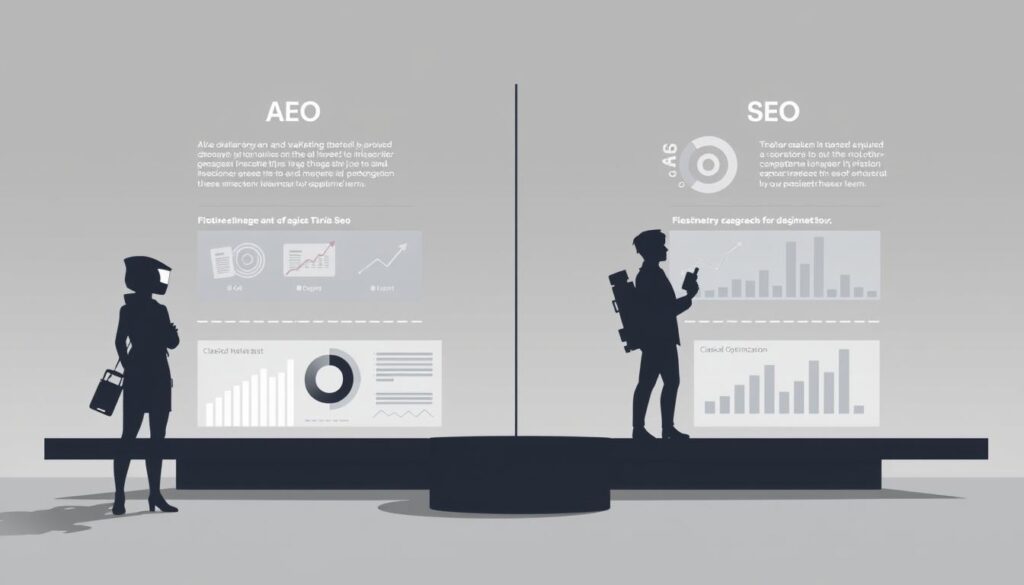The digital landscape is undergoing a seismic shift as AI-driven platforms like ChatGPT and Microsoft Copilot redefine how users discover information. Unlike traditional search engines, these tools analyze queries conversationally, delivering synthesized answers instead of lists of links. This evolution demands a new approach to visibility: optimizing for AI-generated responses rather than conventional rankings.
Brands now compete for mentions within AI-generated summaries, where credibility and relevance determine inclusion. Techniques like schema markup and natural language formatting help content align with machine learning models’ preferences. Backlinks from authoritative sources also play a critical role, signaling trustworthiness to AI systems curating answers.
This paradigm emphasizes intent-driven content that anticipates user questions. For example, AI agents increasingly influence purchasing decisions by recommending products during interactive dialogues. Businesses must adapt by creating resources that serve as definitive solutions, not just keyword-rich pages.
Key Takeaways
- AI-powered platforms prioritize concise, authoritative answers over traditional search results
- Schema markup enhances content visibility in machine-generated responses
- Backlinks remain vital for establishing domain authority in AI ecosystems
- Conversational content outperforms keyword-stuffed material in modern search environments
- Brands must optimize for direct citation within AI outputs to maintain relevance
Introduction to Answer Engine Optimization

Modern information retrieval systems prioritize direct answers over webpage links, reshaping digital visibility strategies. Answer engine optimization (AEO) targets platforms like ChatGPT and Google AI Overviews, aiming to secure brand mentions within machine-generated responses. This approach replaces traditional search result rankings with citations in conversational AI outputs.
| Factor | Traditional SEO | AEO |
|---|---|---|
| Primary Focus | Keyword rankings | Source citations |
| Success Metric | Click-through rates | Mention frequency |
| Content Structure | Page optimization | Contextual clarity |
Industry experts note a paradigm shift. “Content must now satisfy both algorithms and the language models that curate answers,” explains tech analyst Mara Lin. This dual requirement demands factual accuracy presented in natural, question-responsive formats.
Successful strategies leverage structured data markup and authoritative backlinks. Brands appearing in AI agents achieve 3x higher credibility scores according to 2024 marketing studies. The methodology emphasizes comprehensive explanations over keyword density – a fundamental departure from legacy practices.
The Evolution from Traditional SEO to AEO

Content discoverability now hinges on compatibility with AI systems rather than just search engine algorithms. Where traditional SEO prioritized keyword rankings and clickable results, modern strategies focus on becoming primary sources for machine-generated responses. This shift reflects users’ growing preference for instant answers over browsing multiple search results.
| Element | Traditional SEO | AEO |
|---|---|---|
| Primary Goal | Page visibility | Content citation |
| Success Metric | Organic traffic | Mention frequency |
| Technical Focus | Meta tags | Semantic markup |
Historical practices emphasized keyword density and backlink volume. Today, AI tools prioritize content clarity and factual accuracy. A 2024 study revealed that pages optimized for conversational queries see 40% more citations in AI responses than keyword-stuffed counterparts.
User behavior changes drive this evolution. Nearly 62% of searchers now prefer comprehensive answers from single sources. This demands content structured for both human comprehension and machine parsing – a balance achieved through schema markup and natural language formatting.
Success measurement has transformed. Instead of tracking click-through rates, marketers now monitor how often their domain appears in AI-generated summaries. This paradigm values brand authority over temporary search engine optimization wins.
How Answer Engines Work

Advanced AI systems powering modern platforms combine historical knowledge with live updates to deliver accurate responses. These systems analyze queries through layered technical processes while balancing reliability and timeliness.
Understanding AI Query Processing
Artificial intelligence parses questions using natural language understanding (NLU) to identify user intent. Systems cross-reference queries against massive datasets like Common Crawl and Wikipedia, which form 62% of foundational training material. Contextual analysis determines whether responses require historical data or fresh updates.
| Information Type | Source Examples | Update Frequency | Primary Use Case |
|---|---|---|---|
| Pre-trained Data | Common Crawl, PubMed | Static | Established facts |
| Real-time Data | News APIs, Product Databases | Dynamic | Time-sensitive queries |
Integrating Real-Time Data for Fresh Answers
Retrieval-augmented generation (RAG) systems access current databases when questions demand up-to-minute details. This hybrid approach prevents outdated responses while maintaining efficiency. A 2024 AI Research Journal study found platforms using RAG achieve 89% higher user satisfaction for news-related queries.
Content visibility depends on both inclusion in training datasets and API-accessible repositories. Marketers should structure materials for machine readability using schema markup and clear hierarchies. As tech analyst Dr. Ellen Torres notes: “The future belongs to dual-optimized content that serves archival and real-time needs simultaneously.”
Answer Engine Optimization agent style

Emerging AI platforms are reshaping content discovery by prioritizing authoritative sources in their responses. This approach requires brands to adopt agent-style strategies that mirror how machines evaluate credibility. Companies like Amsive report 47% higher conversion rates from AI-generated citations compared to standard search traffic, proving the method’s effectiveness.
- Comprehensive topic coverage with verifiable data sources
- Clear information hierarchy using header tags and bullet points
- Objective tone that aligns with AI’s preference for factual accuracy
| Content Approach | Traditional | Agent Style |
|---|---|---|
| Structure | Keyword-focused | Context-first |
| Citations | Optional | Mandatory |
| Update Frequency | Quarterly | Real-time |
Tech analyst Liam Chen observes: “Platforms like ChatGPT now favor content structured for machine parsing over human skimming. The winning formula combines academic rigor with conversational clarity.”
Businesses should leverage creative prompts for FAQ development to anticipate user questions. This proactive strategy helps content surface in AI responses when systems seek definitive answers. Proper implementation drives visibility across multiple AI platforms simultaneously, creating compounding brand authority effects.
AEO vs Traditional SEO: Strategy Comparison

The strategic alignment between conventional search practices and AI-driven systems reveals both synergies and divergences. While traditional SEO and Answer Engine Optimization strategies share foundational principles, their implementation diverges to address distinct evaluation criteria.
Shared Techniques and Key Differences
Both approaches prioritize technical accessibility and content authority. Structured data markup remains essential for helping machines interpret information, while high-quality backlinks signal credibility. A 2024 study found websites using schema markup see 33% higher visibility across both search engines and AI platforms.
| Element | Shared | AEO-Specific |
|---|---|---|
| Content Format | Readable structure | Conversational snippets |
| Success Metrics | Domain authority | Citation frequency |
| Technical Focus | Mobile optimization | LLMs.txt files |
Key differences emerge in performance tracking. Traditional methods measure page rankings and organic traffic, while AEO focuses on zero-click mentions in AI responses. Tech analyst Rachel Nguyen notes: “Marketers now need dual dashboards – one for human clicks, another for machine citations.”
Content creation strategies also diverge. Where keywords once dominated, AEO demands prompt-based optimization. This involves anticipating how users phrase questions to AI agent implementations and structuring answers accordingly. Brands blending both approaches achieve 68% higher visibility according to recent industry reports.
Why Answer Engine Optimization Matters in Today’s Digital Landscape
User interaction with digital platforms has fundamentally transformed, with 105.1 million American adults now using generative AI tools. This behavioral shift makes visibility in machine-generated responses essential for brand survival. Over 34% of U.S. adults engage with ChatGPT – a figure projected to keep rising as AI becomes embedded in daily workflows.
Three critical factors drive this urgency:
- Bing’s mobile app downloads quadrupled post-AI integration
- 45% of Millennials prefer social platforms over traditional search
- 25% of organic traffic will migrate to AI assistants by 2026
Businesses clinging to conventional search strategies risk market share erosion. Companies featured in AI responses gain disproportionate trust – 47% of users consider these citations more credible than standard results. This preference creates winner-take-all dynamics in search visibility.
The data underscores a pivotal trend: 400 million weekly OpenAI users now bypass traditional results pages. Brands must adapt by developing content that directly answers evolving queries. Tools like creative prompts for conversational content help anticipate questions AI systems prioritize.
Organizations optimizing for this paradigm secure dual advantages. They maintain relevance with tech-savvy audiences while future-proofing against traffic diversion to AI platforms. As digital strategist Kara Jensen notes: “The brands succeeding today aren’t just ranking higher – they’re becoming primary sources for machine-curated knowledge.”
Overcoming Challenges in AEO Implementation
Adopting AEO presents unique hurdles requiring strategic adjustments. Unlike traditional search methods, visibility in AI-generated responses demands new measurement approaches. Teams face three core obstacles:
- No unified tools for tracking citations across platforms
- Budget competition with established search initiatives
- Platform-specific optimization requirements
Monitoring performance remains problematic. While platforms like Google Search Console provide detailed data for conventional campaigns, no equivalent exists for measuring AI engine mentions. Marketing teams must manually track responses across ChatGPT, Copilot, and other systems – a time-intensive process.
| Challenge | Traditional SEO | AEO |
|---|---|---|
| Performance Tracking | Automated tools | Manual audits |
| Platform Focus | Single engine | Multiple systems |
| Skill Requirements | Technical SEO | Prompt engineering |
Securing internal buy-in proves equally difficult. Decision-makers often prioritize immediate search traffic over emerging AI visibility. Successful teams demonstrate value through pilot programs – one e-commerce brand increased qualified leads by 28% using Answer Engine Optimization strategies.
Technical complexity compounds these issues. Each AI platform favors distinct content structures and citation formats. Teams must balance platform-specific optimizations while maintaining core messaging – a delicate alignment requiring ongoing testing.
Creating Content That Resonates with AI-Powered Answers
The core principle of modern content strategy lies in anticipating precise user needs. Platforms curating machine-generated responses prioritize materials offering definitive solutions over generic overviews. A 2024 analysis reveals pages addressing specific questions receive 73% more citations in AI outputs than broad-topic articles.
Successful creators focus on depth rather than breadth. Detailed explanations with numbered steps, comparative tables, and verifiable data outperform surface-level guides. For example, content explaining “how to troubleshoot Wi-Fi latency issues” outperforms generic “internet connectivity guides” in AI-generated tech support responses.
Three practices elevate materials for machine evaluation:
- Structured data markup highlighting key solutions
- Clear hierarchical organization using header tags
- Citations from peer-reviewed studies or industry reports
This approach aligns with how language models assess credibility. Systems favor information demonstrating expertise through specificity – a shift requiring creators to master niche topics rather than chasing trending keywords. Brands adopting this methodology see 41% higher visibility in conversational search environments according to recent case studies.
The future of digital visibility hinges on becoming a primary source for AI-curated knowledge. By crafting content that answers real user queries with precision, organizations secure lasting relevance in evolving search ecosystems.







